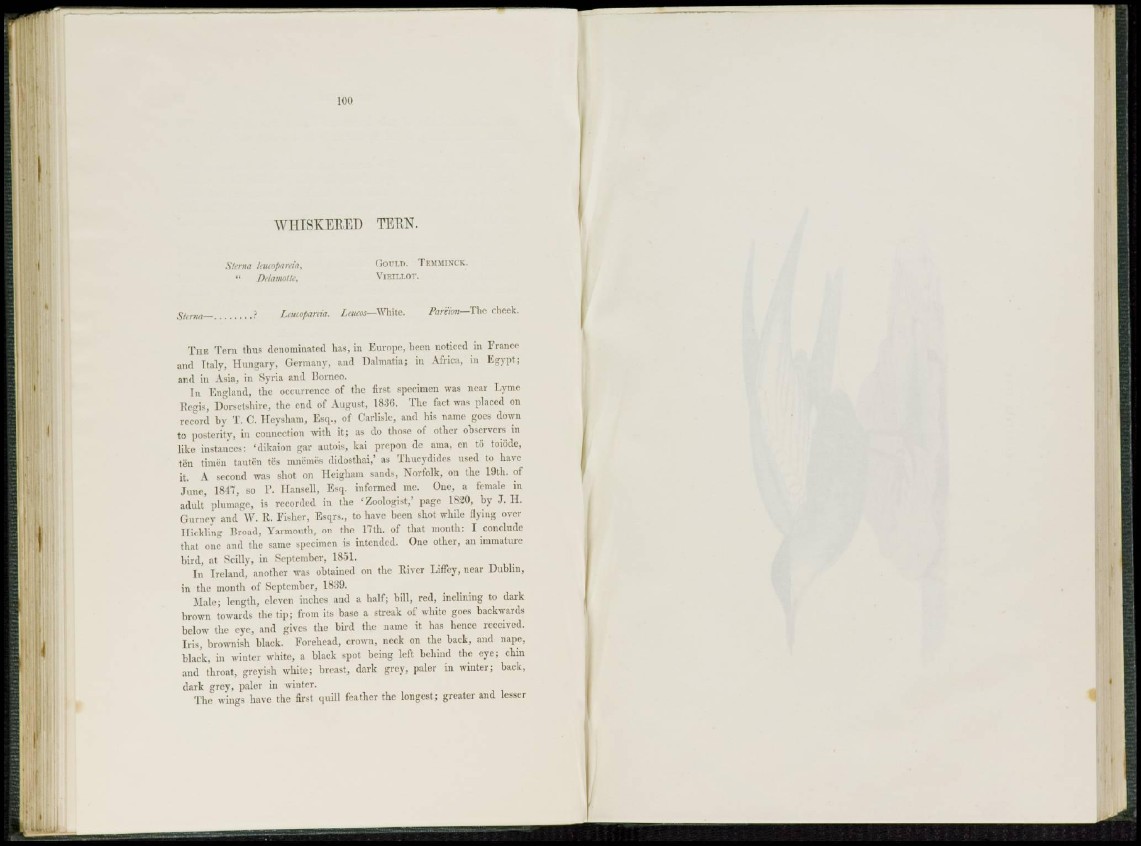
LOO
WHISKERED TETtN.
Sterna leucopareia, GOULD. TRMMINCK.
DtiamotUy VIEILLOT.
Sterna— .- Leucopareia. f.euros—White1. Pareton—The cheek.
T H E Torn thus denominated has, in Europe, been noticed in France
and Italy, Hungary, Germany, and Dahuatia; in Africa, in Egypt;
and in Asia, in Syria and Borneo.
I n England, the occurrence of the first specimen was near Lyme
Regis, Dorsetshire, the end of August, 1836. The fact was placed on
record by T. C. Heysham, Esq., of Carlisle, and his name goes down
to posterity, in connection with it; as do those of other observers in
like instances: 'dikaion gar autois, kai prepon de ama, en to toiode,
ten timen tauten tcs mnemcs didosthai,' as Thucydidcs used to have
it. A second was shot on Heigham sands, Norfolk, on the 19th. of
June, 1817, so 1'. Hansell, Esq. informed inc. One, a female in
adult plumage, is recorded in the 'Zoologist,' page 1820, by J. I I.
Gurney and "W. R. Fisher, Esqrs., to have been shot while flying over
Hickling Broad, Yarmouth, on the 17th. of that month: I conclude
that one and the same specimen is intended. One other, an immature
bird, at Scilly, in September, 1851.
I n Ireland, another was obtained on the River Liffey, near Dublin,
in the month of September, 1839.
Male; length, eleven inches and a half; bill, red, inclining to dark
brown towards the tip; from its base a streak of white goes backwards
below the eye, and gives the bird the name it has hence received.
I r i s , brownish black. Forehead, crown, neck on the back, and nape,
black, in winter white, a black spot being left behind the eye; chin
and throat, greyish white; breast, dark grey, paler in winter; back,
dark grey, paler in winter.
The wings have the first quill feather the longest; greater and lesser